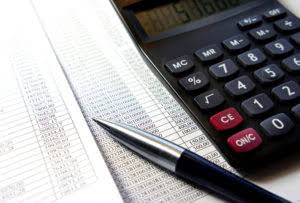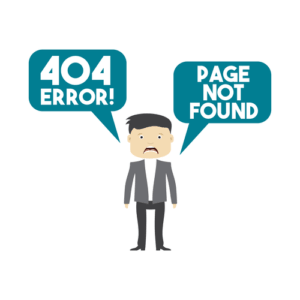Variable Cost vs Fixed Cost: What’s the Difference?

The variable costing calculator can be used by following the steps as discussed below. Making informed decisions about business expenses can help drive profitability. In contrast, costs of variable nature are generally more difficult to predict, and there is usually more variance between the forecast and actual results. The finance manager needs to flag up which costs will rise as sales activity increases. Understanding the nuances of variable cost behaviour equips companies to make more informed and strategically sound business decisions. If you’re looking for support with tracking all the costs that go into making your business possible, FreshBooks accounting software can help.

Average Variable Cost Analysis

But if you need more staff (or need staff to work more hours) to fulfill an order, paying wages for these labor increases would be considered a variable cost. Understanding your variable costs is essential for small and mid-sized businesses. The higher your variable costs, the lower your profit margin, meaning your business makes less money. Different industries tend to have more fixed or variable costs, depending on the nature of the service or product they provide. A variable cost is a recurring cost that changes in value according to the rise and fall of a company’s revenue and output level. Variable costs are the sum of all labor and materials needed to produce units for sale or run your business.
- Understanding this impact is essential for effective cost management and financial planning.
- When it’s time to cut costs, variable expenses are the first place you turn.
- Now that you understand the differences between fixed and variable costs, it’s time to dig in and start reducing your bottom line.
- However, if you pay commissions for every unit sold on top of a salary, they would be variable costs.
- Let us understand how to reduce the value on a variable costs calculator through the discussion below.
- Factory lease payments and property taxes also fall under fixed costs.
How Do Variable Costs Affect Operating Leverage?
- Another example of variable costs would be if a business produces hats at $5 each.
- If the company produces 500 units, its variable cost will be $1,000.
- Making informed decisions about business expenses can help drive profitability.
- Examples of variable costs include the costs of raw materials, labour costs and consumables.
- If it produces 10,000 mugs a month, the fixed cost of the lease goes down to the tune of $1 per mug.
- For example, a company producing electronic gadgets calculates variable costs by summing up the expenses for components, assembly labor, and other inputs that change with production.
- These costs are tied to the production of your business’s product or service and will fluctuate depending on your company’s activity.
For example, electricity used to power machinery increases with production levels. To calculate these costs, track usage patterns and apply relevant rates. For instance, if electricity costs $1,000 for producing 500 units, the cost per unit is $2.
Costs Revenues and Profits – Key Terms

Especially if you run a smaller, home-based ecommerce business, like an Etsy store, you may avoid many of the costs other ecommerce stores deal with. Let our team of on-demand CPAs handle your accounting and technology, so you have more time to focus on what you are best at – running and growing your company. Not sure where to start or which accounting service fits your needs?
- The break-even point refers to the minimum output level in order for a company’s sales to be equal to its total costs.
- Variable cost and average variable cost may not always be equal due to price increases or pricing discounts.
- Your fixed costs include $2,000 monthly rent and $1,000 for equipment leasing.
- These concepts, while related, serve different purposes in accounting and economics.
- Utilities are a variable cost because they usually increase and decrease alongside your production.
- For example, if you produce 1 chair with a variable cost per unit of $50, your total variable costs would increase to $500 if you produced 10 chairs.
Leveraging Technology for Cost Management

Since they mostly stay the same throughout the financial year, fixed costs are easier to budget. They are also less controllable than variable expenses because they’re not related to operations or volume. On the other hand, variable costs show a linear relationship between the volume produced and total variable costs. Variable costing accounting is calculated as the sum of direct labor https://www.bookstime.com/ cost, direct raw material cost, and variable manufacturing overhead divided by the total number of units produced. Variable cost or unit-level cost is a method of cost accounting which accounts the costs of production directly vary with the output.
- The cost to package or ship a product will only occur if a certain activity is performed.
- In a production line, for instance, reducing the time it takes to accomplish a task can lower the labor cost per unit.
- If the differences between the two still seem unclear, you should get a better sense of them with the examples of fixed vs. variable expenses below.
- Unlike variable costs, which encompass a broader range of expenses, marginal costs focus specifically on the incremental cost of increasing production by a single unit.
- A key characteristic of operating expenses is their variable nature – they fluctuate according to the level of business operations.
- Other strategies include analyzing usage and cutting waste; outsourcing areas like marketing or customer service; and implementing workflow technology.
Depending on how your sales or production rates are going, unearned revenue your variable costs can rise or fall—hence the name. Fixed costs are expenses that remain the same regardless of production output. Whether a firm makes sales or not, it must pay its fixed costs, as these costs are independent of output. Fixed costs remain constant regardless of your production or sales volume.

Importance of Variable Cost Analysis
Semi-variable costs, also known as mixed costs, are those costs that consist of both fixed and variable components. These costs can be challenging to analyze, as they change with the level of production but not proportionally. An example of a semi-variable cost can be the electricity bill for your business.
Examples of fixed costs for restaurants
In short, fixed costs are more risky, generate a greater degree of leverage, and leave the company with greater upside potential. On the other hand, variable costs are safer, generate less leverage, and leave the company with a smaller upside potential. In general, companies with a high proportion of variable costs relative to fixed costs are considered to be less volatile, as their profits are more dependent on the success of their sales. If a business increases production or decreases production, rent will stay exactly the same. Although fixed costs can change over a period fixed vs variable costs of time, the change will not be related to production, and as such, fixed costs are viewed as long-term costs. The break-even point determines the level of sales needed to cover all of the costs of production; fixed and variable costs.
